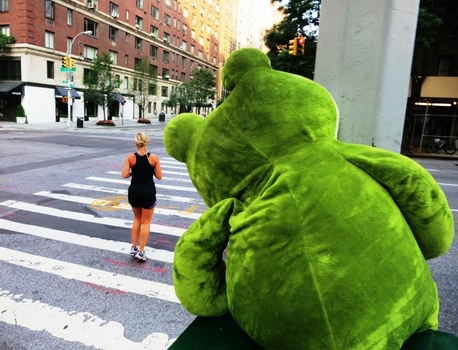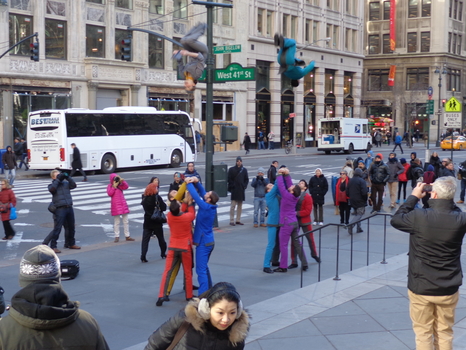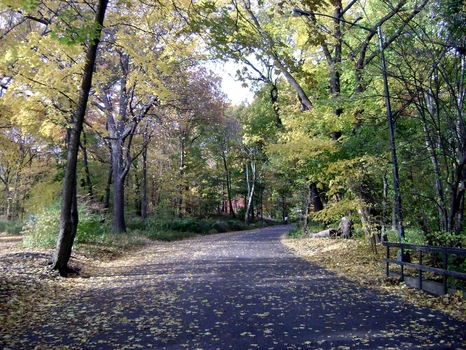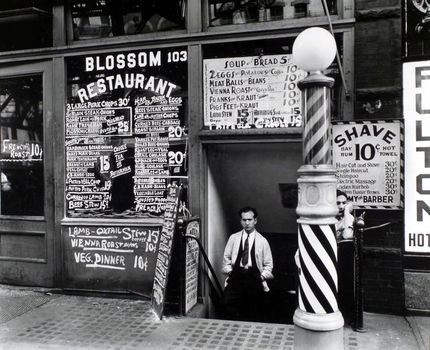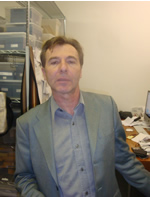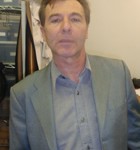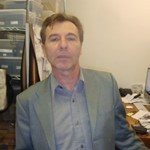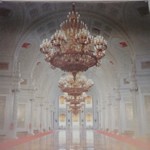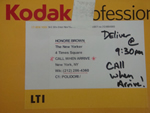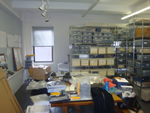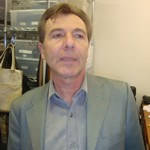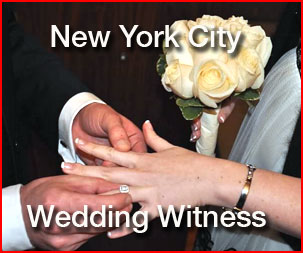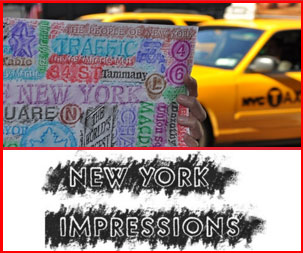Ask a New Yorker: What do you do for a living?
Robert: I make photographs. I like to make films too, let’s see if I get
to do that again. I guess I’m known for making photos. I’m a photographer.
Ask a New Yorker: Before the interview, I told Robert I was a Tiger in the Chinese
Zodiac.
Robert: And I said, ‘Are you metal tiger?’ and you said, ‘What’s
that?’ It’s a sixty year cycle– five elements per sign. Since you’re
born in 1962, how should I put it, para-, para-, paraphrase or para, God, I
can’t think of what the word would be.
Ask a New Yorker: Damn, you’re telling me I’m not in a real tiger
mode? I’ve been wearing red every day.
Robert: Not for you. We are in the metal tiger mode and for you, you’re
a water tiger. Me, I’m a metal rabbit, its next year for me. It’s
simple. The Chinese astrological system is based on the zenith of life as being
sixty years old, because everybody hits their stride at sixty in their system.
Ask a New Yorker: I’m also an Aquarian and from my vast knowledge of astrology
we’ve entered the age of Aquarian. We are no longer dawning.
Robert: The dawn of the Age of Aquarius… I’ve giving this some thought,
although not recently. Looking at some of my astrological profiles on my computer
here, I gage it by the date that Pluto enters into Aquarius, which is March
23, 2023. And I say, ‘this is the dawn of the age’ because officially
those ages are based on the retrocession of the equinox. I would need to look
up in another book when that really hits. I do believe from memory, having read
it a while back that, that official date is something like 2156 so that’s
a ways off. But you see what’s going to happen. Pluto is like the collective
subconscious.
Ask a New Yorker: What’s new in your life?
Robert: I’ll tell you what I just did. I put out this new
book, which was 26 years of working on Versailles. Which, by the way, hasn’t
received much of a response. It sort of hurt my feelings a little bit.
Ask a New Yorker: You did a book on New Orleans & Hurricane Katrina.
Robert: That I only put six months of my life into, or maybe nine months. And
the Chernobyl book I put in hardly three weeks, where this Versailles book…
I put twenty six years into this book and those other two books got more mentioned,
more reactions. It just goes to show how the world isn’t necessarily in
sync with ones intents. Who knows? So I just did that. For the last two years
I’ve been constructing a loft where I’m going to move both my studio
and living operation. This has taken so much longer and so much more money than
I had ever anticipated. I’m trying to get moved maybe in the next month
and then I’m going to start a kind of a new life after that.
Ask a New Yorker: You want to get back into film.
Robert: I want to get back into film, but I still want to do some photography.
Some of the ideas that I had, things that I wanted to shoot really don’t
work in photography as they would in film, which is strange because I started
out in film and some of the ideas that I had then about cinematography worked
better in photography than film. So maybe this is like a 180 not a 360.
Ask a New Yorker: Where have you travelled recently for your photography work?
Robert: The last place, I think, was Brazil. I went because I’ve been
shooting a lot of what they call in French “sauvage” which means
savage, not because the people are wild but because they have no planning. No
urban planning. And before that I was in Mumbai photographing some of the slums
there. A company there is demolishing the slums and putting up high rises.
Ask a New Yorker: Do you have any pets?
Robert: I find in the city, if I was an animal I wouldn’t want to be here.
And unless you have one of those aquariums and stuff, I just find that having
fish is dumb. I look at them but what do they do? I knock on the glass they
don’t come up. I don’t have much interaction. I’ve tried interacting
with fish in aquariums it doesn’t work so well.
Ask a New Yorker: What’s the last movie you watched?
Robert: The last movie I remember I saw was on Turner Classics movies. I saw
the first sound film ever made. Do you know what film that is?
Ask a New Yorker: A Charlie Chaplin film?
Robert: No, the Jazz
Singer with Al Jolson, believe it or not. And the sound synch portions are
just for singing the rest of the movie is silent. It has an audio track, a piano
track but not sound synch. And there are some ambient noises when you hear cars
in the street. But the actual sound synch portion is only the singing. I didn’t
realize what a Jewish movie this is. It’s about this guy’s father
from the fifth generation of cantors, and his rabbi father didn’t like
the fact that he wanted to be a jazz singer. The whole thing about that song
“Mamie” is he’s actually singing to his mother. He was historically
hit for putting the black stuff on his face when he sings this song. It was
seen as racial. But I guess it meant in the movie that, yes, he was going from
being a Jewish cantor to I guess, a black American,where the jazz music came
from.
Ask a New Yorker: In regards to film and your encyclopedic-type knowledge on
things, you remind me of avant-garde filmmaker Harry
Smith.
Robert: Thank you for saying that. I must have met Harry Smith in late 1969
or 1970 at the Anthology Film Archives. At that time, Jonas
Mekas, one of the founders of the Anthology Film Archives, lived at The
Chelsea Hotel. So did Harry. Harry used to come to the anthology to edit a film
he was working on then called “Mahogany”. I don’t know if
he had editing equipment in his room. I think he did it to check out what was
going on at the Anthology and get some work done at the same time, like sort
of killing two birds with one stone. It was like a lot of work doing stuff for
Harry because of his pot, beer and Dexedrine consumption habits. I would say
that like every film splice would mean one joint, one beer and one Dexedrine.
Ask a New Yorker: Who was Harry Smith?
Robert: I would say Harry was more of a historian of mystic philosophies. He
first told me about the Theosophical Society of India. It’s a funny thing
because he said, ‘Ah, Robert one day you should go and photograph the
library in Adyar’.
Annie Besant had won her private library in Varanasi. You know what? I actually
shot that library two years ago. I got around to it. It took thirty eight years
or something to where I got around to doing that. And because of Harry I learned
about Krishnamurti, like in the 70’s. Another book that was a big foundation
for me is a book by Marguerite Mertens-Stienon called “Studies in Symbolism-
Theogonic and Astronomical’ written in 1930. The last thing I want to
say about Harry is that he was the only one who would show up at the screenings
and furnish a constant ongoing monologue while his films were going.
Ask a New Yorker: Thank you Robert.


